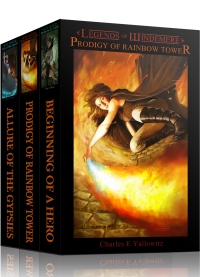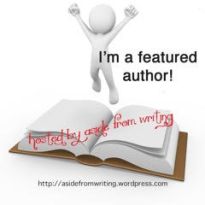
As we established on Monday, eucatastrophe is when a story ends with the protagonist being rescued from the clutches of doom by an event beyond their control. So, how can you use it intentionally?
- First big rule is that these are typically happy endings. The hero is being saved and claiming victory, which tends to be a good thing. While this can have a dark twist afterwards, a eucatastrophe holds a moment of optimism that things are going to work out for the best.
- Unlike Deux Ex Machina, eucatastrophe works within the rules of the world. You cannot change how magic works in the final hour just to save the day. Not unless you have noted that what’s about to occur is possible and the circumstances are there to make it so. Readers need to see the rescue happen and go ‘I can see how that makes sense’ instead of ‘where did that come from’. Seriously, you never want to hear that second option.
- Eucatastrophe doesn’t always have to involve a villain falling into a volcano because of their own actions. You have cliffs, meat grinders, bottomless pits, whirlpools, alligator pits, icy chasms, man-eating pits, and a whole variety areas that are ripe for plummeting villains. That or you can do something other than that option.
- If you come up with a eucatastrophe idea near the end, but it doesn’t really fit then add it anyway. There’s always the option to do an editing run where you change things to make the ending plausible. It could involve a rewrite or adding a single legend/scene to establish what you need.
- Try not to immediately undo a eucatastrophe as a way to trick the audience. You get your shock value, but it also means you didn’t actually use a eucatastrophe. It was a red herring since it wasn’t the real ending. People may argue this point, so it really is an opinion. Still, you will damage the trust of readers if you keep pulling the happy endings away.
- Even though this event is going to happen beyond the protagonist’s control, they still have to work towards their goal. They don’t usually know that this is about to happen, which is why they aren’t controlling it. So, they need to be fighting to the end or falling into sorrow because they think they’ve failed. Otherwise, it feels like they knew their butts would be saved, which makes one wonder why they were needed in the first place.
- The protagonist having no control over the event doesn’t mean they lack any influence over it. While it might not be in the moment, it helps for them to have done something that made the eucatastrophe more of a possibility. For example, being nice to a hermit who they ran into near the beginning. This hermit may turn out to be a god who now owes the protagonist a favor. It’s out there and cringe-worthy, but it’s plausible in the scope of the story.





Glad you expanded this. It’s an intriguing concept.
LikeLike
Thanks. Couldn’t resist going further.
LikeLiked by 1 person
Great tips, Charles. They also help explain eucatastrophe a little more.
LikeLike
Thanks. Glad it helped clarify.
LikeLiked by 1 person
😊
LikeLike
I like your point #4. If you come up with a great idea for a twist, you can always edit with an eye to building that up so it will make sense as an outcome.
LikeLike
True. That was the hardest tip to write. Goes so much against my author nature of having a plan from start to finish.
LikeLiked by 1 person
Great tips. Seems like you need a book with a good length so the overturn of the catastrophe doesn’t feel tacked on. Totally agree about number 5 and the warning against shock value.
LikeLike
True. It probably wouldn’t work too well with a short story. Maybe on a smaller scale since eucatastrophes aren’t always on an epic scale. They could be personal.
LikeLike
Charles, I never heard of this. Your explanation was clear and interesting. I can see how I’ve used it in my historical fiction book. Getting close to the end has some worries for the protagonist, then a deep sigh of relief at the end. Happy about that! 📚🎶 Christine
LikeLiked by 1 person
Glad you enjoyed it. We do seem to use eucatastrophes without realizing it.
LikeLiked by 1 person